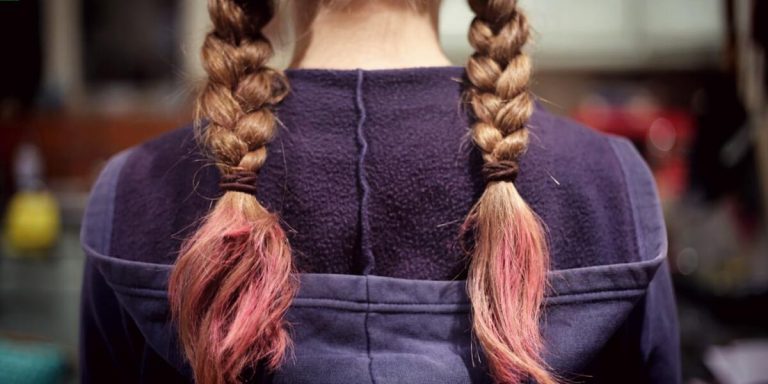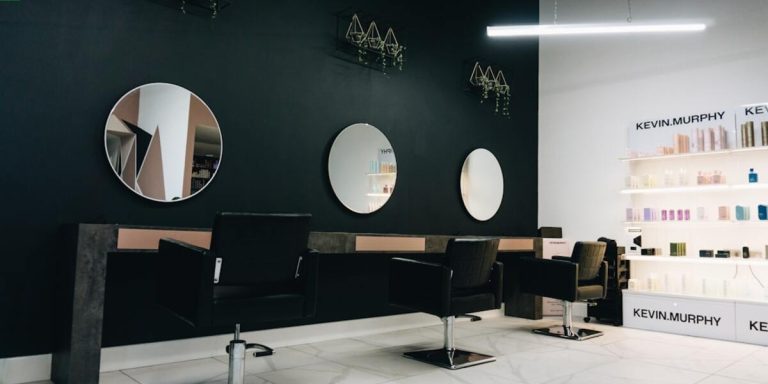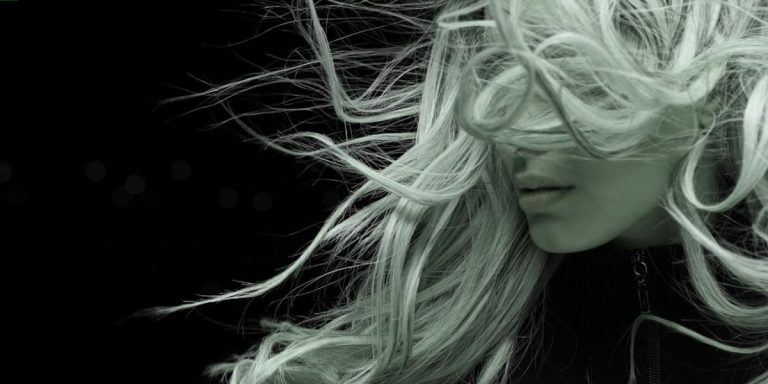Covid Hair Loss Treatments: Understanding the Connection and Solutions
The global pandemic has introduced several unforeseen health issues, with “COVID hair loss treatments” gaining popularity. The connection between COVID-19 and sudden hair loss puzzles many but affects millions worldwide. Recovered patients often find their hair falling out alarmingly fast. Understanding this disorder associated with the coronavirus crisis and exploring treatment strategies is crucial.
In search of solutions for covid-related hair loss? You’re not alone – countless individuals globally are seeking effective regimens or interventions that could help them recover their lost tresses post-COVID infection. This article aims to shed light on potential causes behind this phenomenon, highlighting various practical steps we can take toward thwarting further damage while introducing viable options for restoration.
Did you know?
Did you know that Telogen Effluvium, a type of temporary hair loss, is increasingly reported in COVID-19 survivors? This condition which normally occurs due to stress or trauma affects the normal growth cycle of hair follicles.
Understanding COVID-Related Hair Loss Phenomenon
The recent Pandemic has left behind a plethora of challenges, among which the unexpected and alarming issue of ‘COVID-related hair loss’ is notable. This phenomenon isn’t selective; it affects individuals regardless of age or gender who’ve had an encounter with the notorious virus. The strain on the body during infection can disrupt normal hair cycle leading to increased shedding post-recovery – a condition medically referred to as Telogen Effluvium.
Understanding this sudden onset balding requires acknowledging how our bodies respond to severe stress such as illness or trauma — physiological alterations kick in pushing more hairs into resting (telogen) phase than usual. Once these telogenic hairs begin falling out around 2-3 months later, people alarmingly notice clumps coming off unexpectedly while brushing or showering.
Recognizing the Symptoms: How to Identify COVID-induced Alopecia
Recognizing early symptoms can play a crucial role in controlling this hair loss phenomenon and initiating effective covid hair loss treatments.
Firstly, pay close attention to unusual shedding which may reflect as clumps of hairs falling out during brushing or washing. It’s normal to lose 50-100 strands each day; substantial deviation suggests you might be experiencing alopecia.
Secondly, look for shrinking ponytails and widening parts – these are subtle indications that your hair volume may be decreasing rapidly due to Covid-related stress or direct impact of the disease itself.
Another common symptom is noticeable bald patches appearing anywhere on your scalp indicating severe alopecia conditions like ‘Alopecia Areata’. This would require immediate medical intervention with specialized COVID induced alopecia treatment programs designed specifically to combat this situation effectively harnessing advanced technological advancements available only since 2023.
Moreover, some people observe changes in their nail quality along with growing instances of diminishing scalp density—another signifier pointing towards possible onset of acute telogen effluvium triggered by intense physiological shocks including high fever associated with coronavirus infection.
Analyzing Causes: Linking SARS-CoV-2 Infection and Hair Shedding
In the aftermath of the SARS-CoV-2 pandemic, medical professionals worldwide noticed a spike in major hair shedding cases. The phenomenon, termed ‘Telogen Effluvium’ (TE), has been closely tied to COVID-19 infection as one of its long-term effects.
The understanding behind this alarming correlation points towards stress-induced reactions catalyzed by viral infections in general and specifically with COVID-19 patients—a direct trigger for TE. Exposure to extreme physical or emotional distress influences our body’s normal functionalities; one such impact is pushing an unusually large number of hairs into resting phase simultaneously while halting new growth—culminating in significant hair loss usually 3 months post-distress period.
Moreover, high fever—one symptomatic characteristic shared amongst positive SARS-CoV-2 infected individuals—is another noted instigator leading to telogen effluvium condition evolution. Equally worth noting are unhealthy dietary habits that could be associated during recovery phases which may lead to poor scalp health due advancements like decreased nutrient uptake and altered metabolism shifts caused by this virus strain.
Finally yet importantly, studies have shown the link between certain medications used commonly during treatment regimes against Covid-related severe conditions contributing to causing temporary alopecia alongside other side effects according human tolerance levels on individualistic scales.
Effective Treatments for Post-COVID Hair Restoration
As we navigate the aftermath of the global pandemic, COVID-19 has shown some unexpected effects including hair loss. Post-viral shedding—known as telogen effluvium in medical terms—has become a significant concern for many people recovering from coronavirus exposure. This condition typically happens after stressful experiences or health issues and can last up to six months.
However, hope is not lost if you’re experiencing this type of hair fall out as there are now several effective treatments available specifically for post-COVID hair restoration. These treatments leverage advancements in science and technology that have been developed rapidly during these challenging times allowing those who suffered from viral-induced alopecia to regain control over their hair health.
Firstly, modern medicinal methods such as Minoxidil (Rogaine) could be used topically on your scalp which works by encouraging new growth while reinforcing existing hairs giving them more resilience against fallout caused due to the virus stress factors. Secondly, natural supplements enriched with vitamins like Biotin may also aid recovery promoting healthier follicle function for improved regrowth following periods of increased shedding brought on by COVID-19 infection.
Another important option involves lifestyle changes such as incorporating nutritious diets high in protein ensuring sufficient restorative sleep which goes a long way towards boosting overall wellness hence supporting scalp vitality leading ultimately toward stronger strands less susceptible potential future episodes associated with disease-related trauma conditions further down line.
Embracing Medical Interventions: Minoxidil and Finasteride Usage
As we continue to navigate the effects of COVID-19, including post-virus hair loss, two medically approved interventions are establishing themselves as effective treatments – Minoxidil and Finasteride. Here’s why they should be on your radar if you’re seeking solutions for post-COVID hair restoration.
Minoxidil is a renowned over-the-counter medication specifically designed to stimulate hair follicles and promote regrowth. Originally used in oral form to treat high blood pressure, researchers noticed an unusual side effect – increased body-hair growth! This discovery led pharmaceutical companies treading new paths; creating topical applications that directly impact our scalp’s wellbeing by extending the ‘grow’ phase of our hairs’ life cycle.
For those who’ve experienced covid-induced sparse patches or thinning manes during 2023 pandemic aftermaths will find solace knowing minoxidil has been proven effective across numerous studies. Its widespread accessibility combined with simple usability makes it one of today’s most recommended options against this modern-age issue.
Exploring Natural Remedies: Nutritional Supplements and Essential Oils
Navigating through the post-COVID era, hair loss has emerged as a distressing consequence for survivors. Predominantly linked to stress and hormonal imbalance caused by the illness, it’s not entirely irreversible. Thanks to natural remedies like nutritional supplements and essential oils that are showing promising results in managing COVID-induced hair loss.
Embark with us on an informative journey to explore how nature-inspired treatments can produce positive impacts.
1. Nutritional Supplements: A healthy diet is your body’s primary line of defense against any health challenges, including those concerning your locks.
– Biotin: Known for its miraculous benefits for skin and nails, biotin also emerges as a strong player in boosting hair growth.
– Iron: Iron deficiency often correlates with severe hair fall issues. Increasing iron intake can potentially reignite dormant follicles encouraging new growth.
Essential Oils: Plant extracts like essential oils have multiple uses, including aromatherapy and wellness enhancement.
– Lavender Oil: Its ability to speed up cell metabolism helps stimulate timely replacement of damaged or lost hairs.
– Rosemary Oil: It improves circulation prompting healthier scalp conditions conducive for robust hair regrowth.
The concept behind using these resources revolves around replenishing our system with nutrients vital for maintaining optimal follicle functioning while promoting relaxation reducing overall stress levels – one significant reason behind catastrophic shedding seen after recovering from COVID-19 infections.
Maintaining Healthy Scalp Post-Coronavirus Infection
A common yet often overlooked consequence of COVID-19 infection is its impact on our hair health. The stress, both physical and psychological due to the disease, can lead to noticeable hair shedding – a condition known as telogen effluvium. However, with proper care and treatment strategies tailored for this specific type of post-infection hair loss -which we’ll affectionately refer hereafter as ‘covid-hair’, you can maintain a healthy scalp even after recovering from coronavirus.
Many individuals have reported noticing increased amounts of loose strands in their brushes or showers post-recovery. This sudden change shouldn’t be a cause for panic though; it’s merely your body’s natural reaction to severe illness or extreme stress. Your system channels energy towards combating the virus and maintaining essential bodily functions; sadly this could mean less energy dedicated toward non-critical processes like growing new hairs.
As daunting as it may seem initially, covid-hair isn’t permanent nor untreatable! There are various effective treatments available aiming specifically at restoring vitality back into your frail locks left wearied by the ordeal that was Covid-19.
It all starts with something simple – good nutrition packed full of vitamins B,C,D,E,K along with iron & zinc help bolster strength back into malnourished roots while hydrating adequately aids in keeping dryness at bay which might further aggravate an already sensitive scalp situation post-COVID recovery.
Adopting a Balanced Diet for Optimal Hair Health Recovery
Covid-19 has created a slew of unpredictable and distressing side effects, one being hair loss. This phenomenon is often the result of your body’s response to intense stress, also known as telogen effluvium. However, hope isn’t lost; with proper dietary practices integrated into daily routines post-coronavirus infection you can combat this issue effectively.
Firstly, protein-rich foods are an important building block for strong healthy hairs as they provide essential amino acids that your hair needs. Incorporate lean meats like chicken or turkey into meals regularly alongside fish species high in omega-3 fatty acids such as salmon or mackerel.
In addition to these powerhouse proteins sources remember to add adequate iron intake by consuming spinach lentils legumes beans which helps red blood cell production leading increased oxygen supply reaching your roots ensuring stronger growth patterns ultimately reducing chances baldness occurring after stressful episodes illness recovery periods including those experienced following COVID infections.
Next on our list is vitamin C – critical for collagen creation (an ingredient needed strand strength). Citrus fruits strawberries bell peppers all excellent ways achieve necessary levels required optimal upkeep maintenance regeneration process goes along nurturing healthier head locks!
Implementing Stress Reduction Techniques to Minimize Telogen Effluvium
Telogen effluvium, a form of temporary hair loss often triggered by severe stress or illness such as COVID-19, has become more prevalent in recent years. With this increase comes the need for practical and effective solutions to combat its effects.
Implement stress reduction techniques to decrease your stress levels and minimize telogen effluvium symptoms post-COVID infection. Manage your anxiety during these challenging times with these actionable tips:
1. **Adopt Relaxation Exercises:** Consider integrating activities like yoga, deep breathing exercises, progressive muscle relaxation into your daily routine. Not only do they lower cortisol (a hormone linked to hair shedding), but also stimulate overall health benefits.
Conclusion
In the wake of Covid-19, understanding and managing hair loss treatments has never been more necessary. With our deep dive into “covid hair loss treatments,” you’re now equipped with the knowledge to navigate this challenging issue. Remember, it’s not just about overcoming a pandemic but also ensuring your body recovers fully – fabulous mane included.
Don’t let hair woes dominate your post-Covid life. Armed with an array of solutions discussed here, reclaiming healthy tresses is in reach! And if you need further insights or resources on effective remedies for various forms of alopecia or are interested in exploring other dimensions related to ‘hair Loss Treatments’, feel free to delve deeper into our website.
Your path toward recovery awaits!.







